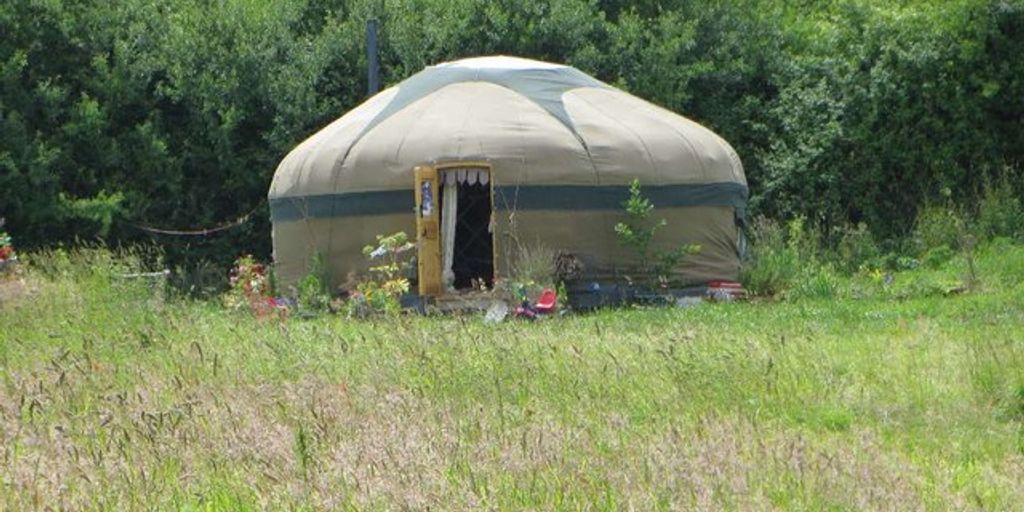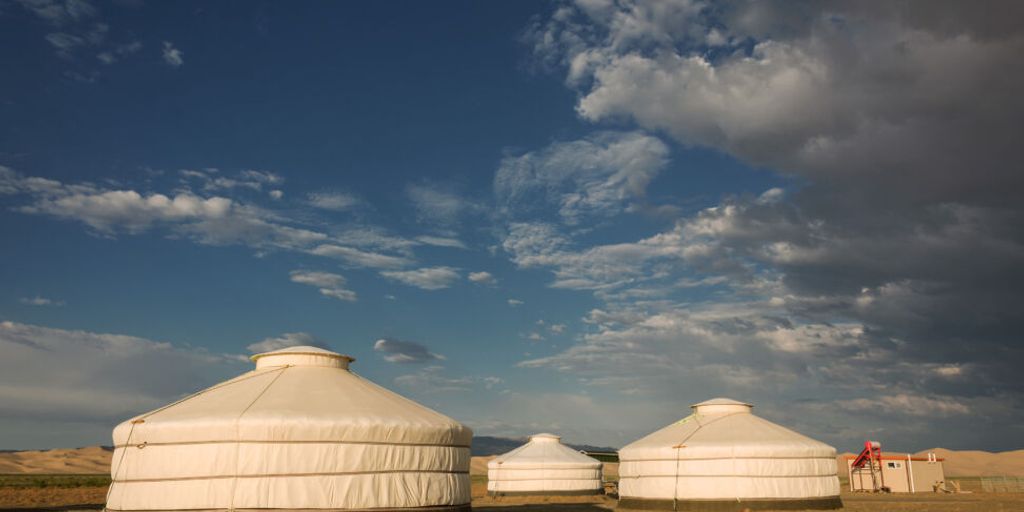Building a Yurt Vs. Tipi: Which Traditional Structure Suits Your Needs?
When deciding between a yurt and a tipi, it’s essential to consider their unique features and benefits. Yurts offer more space and better heat retention, making them ideal for year-round living, while tipis are better suited for temporary or seasonal use. To explore more about these fascinating structures and make an informed choice, visit our website today.
Key Takeaways
- Yurts and tipis have distinct historical backgrounds, with yurts originating in Central Asia and tipis rooted in Native American culture.
- Structurally, yurts and tipis differ in their frameworks, materials, shapes, and weather resistance capabilities.
- Cost-wise, tipis are generally more affordable than yurts, both in terms of initial purchase and maintenance costs.
- Living experiences in yurts and tipis vary, with differences in comfort, space, ease of setup, and seasonal suitability.
- Ultimately, the choice between a yurt and a tipi comes down to what you need and what you can afford. Both options offer unique experiences and can be a wonderful addition to your lifestyle.
Unique Features of Yurts and Tipis
Structural Differences
When it comes to structural differences, yurts and tipis couldn’t be more distinct. Yurts are circular, with a wooden frame and a fabric cover, often featuring a central support column. Tipis, on the other hand, are conical and rely on a series of poles arranged in a circle, all meeting at a single point at the top. This makes tipis easier to set up and take down, which is perfect for those who need a more mobile living space.
Materials Used
The materials used in constructing these traditional structures also vary. Yurts typically use a combination of wood for the frame and canvas or felt for the covering. Tipis are traditionally made from wooden poles and animal hides, though modern versions often use canvas. This difference in materials can affect not only the durability but also the overall feel of the living space.
Weather Resistance
Weather resistance is another key factor. Yurts are known for their robust construction, making them suitable for a variety of climates, including harsh winters. Tipis, while also weather-resistant, are better suited for milder conditions. Their conical shape allows for excellent ventilation, which is great for warmer climates but might not offer the same level of insulation as a yurt.
Both yurts and tipis have gained global recognition. People around the world appreciate their distinctive and enriching experience. Whether it’s a yurt in a European countryside or a tipi in an Australian outback, these structures offer a unique way to connect with nature and history.
Living Experience: Yurt Vs. Tipi

Comfort and Space
When it comes to comfort and space, yurts often have the upper hand. They typically offer more room, making them suitable for longer stays and larger groups. Medium-sized yurts strike a balance between space and intimacy, making them perfect for couples. On the other hand, tipis are more compact and can feel cosy but might be a bit cramped for extended living.
Ease of Setup
Setting up a yurt can be a bit more involved compared to a tipi. Yurts usually require a solid base and more time to assemble. Tipis, however, are known for their ease of setup and portability. If you need a structure that you can quickly put up and take down, a tipi might be the better choice.
Seasonal Suitability
Yurts are generally more weather-resistant, making them suitable for year-round use, even in harsher climates. They provide better insulation and can be equipped with heating systems. Tipis, while offering some protection from the elements, are better suited for milder weather conditions. They are ideal for summer camping or temporary stays.
Ultimately, the choice between a yurt and a tipi comes down to what you need and what you can afford. Both options offer unique experiences and can be a wonderful addition to your lifestyle.
Cost Considerations
Initial Purchase Price
When it comes to the initial purchase price, tipis are generally more affordable than yurts. For instance, a standard 24-foot yurt might cost around $8,295, while a similar-sized tipi could be approximately $2,483. Here’s a quick comparison:
| Structure | Approximate Cost (24′) |
|---|---|
| Yurt | $8,295 |
| Tipi | $2,483 |
Keep in mind that these prices can vary based on size and additional features. While the initial cost of a tipi is lower, you might find that a yurt offers better value in the long run due to its durability and comfort.
Maintenance Costs
Maintenance costs can also differ between the two structures. Tipis, being simpler, generally require less upkeep. However, they may need more frequent repairs due to their less weather-tight design. Yurts, on the other hand, are more intricate and may have higher maintenance costs but offer better weather resistance.
If you’re weighing your options, consider not just the initial purchase price but also the long-term benefits and maintenance costs. A 12ft standard ash yurt might be pricier upfront, but its durability could save you money over time.
Long-term Investment
When thinking about long-term investment, it’s essential to consider both the initial cost and the ongoing maintenance. While a tipi might be cheaper to buy initially, a yurt’s durability and comfort could make it a more cost-effective option in the long run. So, if you’re planning to use the structure for many years, investing in a yurt might be the better choice.
Cultural Significance
Historical Background
Yurts have travelled a long way from their origins in Central Asia. Initially, they were the homes of nomadic tribes, designed to be easily dismantled and transported. Today, they are celebrated for their unique charm and ability to bring people closer to nature. Tipis, on the other hand, are deeply rooted in the culture of many Native American tribes. Both structures have been recognised for their functional and aesthetic qualities by people around the world.
Cultural Importance
Yurts and tipis are not just homes; they are symbols of a simpler, more connected way of life. In 2013, the traditional craftsmanship of the Mongol Ger and its associated customs was recognised as part of our Intangible Cultural Heritage by UNESCO. Similarly, tipis continue to hold cultural significance for Native American tribes, serving as a link to their ancestral heritage.
Modern-Day Use
Today, you can find yurts being used as full-time residences, holiday retreats, and even unique venues for events. Tipis are also popular as full-time residences, backyard play-caves, and weekend wilderness getaways. These charming structures continue to captivate people worldwide, offering a distinctive and enriching experience that brings you closer to nature and cultural heritage.
Environmental Impact
When it comes to the environmental impact of traditional structures like yurts and tipis, there are several factors to consider. Both have been used for centuries by nomadic cultures and are making a resurgence in modern times as eco-friendly and versatile living spaces. Let’s delve into the specifics.
Eco-friendliness
Yurts and tipis are inherently eco-friendly due to their minimalistic design and use of natural materials. Both structures leave a small footprint on the environment, making them ideal for those looking to live sustainably. The materials used, such as wood and canvas, are often renewable and biodegradable.
Sustainability
The sustainability of yurts and tipis is another significant factor. These structures are designed to be easily assembled and disassembled, which means they can be relocated without causing permanent damage to the land. This is particularly beneficial for those who wish to live in harmony with nature.
Resource Consumption
In terms of resource consumption, yurts and tipis are quite efficient. They require fewer materials to construct compared to traditional houses, and their design promotes energy efficiency. For instance, the circular shape of a yurt helps in maintaining a consistent temperature, reducing the need for additional heating or cooling.
Choosing between a yurt and a tipi ultimately depends on your personal preferences and environmental values. Both offer unique benefits that contribute to a sustainable lifestyle.
Choosing the Right Structure for Your Needs
Personal Preferences
Your personal preferences play a significant role in this decision. If you prefer a more traditional and rustic feel, a tipi might be the way to go. On the other hand, if you want something that feels a bit more modern and spacious, a yurt could be a better fit.
Intended Use
Consider how you plan to use the structure. Are you looking for a permanent residence, a weekend getaway, or perhaps a unique accommodation unit for events? Tipis are often easier to set up and take down, making them ideal for temporary use. Yurts, with their sturdier construction, are better suited for long-term living.
Location and Climate
The environment where you plan to set up your shelter is crucial. Tipis are designed to withstand strong winds and can be more suitable for open plains. Yurts, with their circular structure, offer better insulation and can handle a variety of weather conditions, making them a versatile choice.
In summary, while both yurts and tipis offer unique structural advantages, your choice will depend on your specific needs and the environment where you plan to set up your shelter.
Choosing the right structure for your needs can be a daunting task, but we’re here to help. Whether you’re considering a yurt, teepee, or another unique dwelling, our comprehensive guides and expert advice will ensure you make an informed decision. Visit our website to explore more and find the perfect fit for your lifestyle.
Conclusion
In conclusion, both yurts and tipis offer unique and enriching experiences for those looking to connect with nature and embrace a simpler way of living. Yurts provide a more robust and weather-tight structure, making them ideal for longer stays and harsher climates, while tipis offer a more cost-effective and easily transportable option. Whether you choose a yurt or a tipi, both structures have rich histories and cultural significance that add depth to your outdoor adventures. So, why not try both and discover which one truly suits your needs?
Frequently Asked Questions
What are the main differences between a yurt and a tipi?
Yurts and tipis differ mainly in their structure, materials, and cultural origins. Yurts have a circular wooden frame covered with felt or canvas, while tipis are conical and made of wooden poles covered with animal skins or canvas.
Which is more expensive, a yurt or a tipi?
Generally, yurts are more expensive than tipis. This is due to the more complex structure and materials used in yurts, which often result in higher initial purchase prices and maintenance costs.
Are yurts suitable for year-round living?
Yes, yurts are suitable for year-round living. They offer better heat retention and weather resistance compared to tipis, making them ideal for harsher climates and longer stays.
How easy is it to set up a tipi?
Tipis are relatively easy to set up and take down, making them ideal for temporary or seasonal use. Their straightforward design allows for quick assembly and disassembly.
What is the historical background of yurts and tipis?
Yurts originated in Central Asia and have been used by nomadic tribes for centuries. Tipis, on the other hand, have roots in Native American culture and were traditionally used by the Plains Indians.
Which structure is more eco-friendly, a yurt or a tipi?
Both yurts and tipis are eco-friendly options, but tipis generally have a lower environmental impact due to their simpler design and use of fewer materials. Yurts, however, offer better insulation and can be more energy-efficient in the long run.





